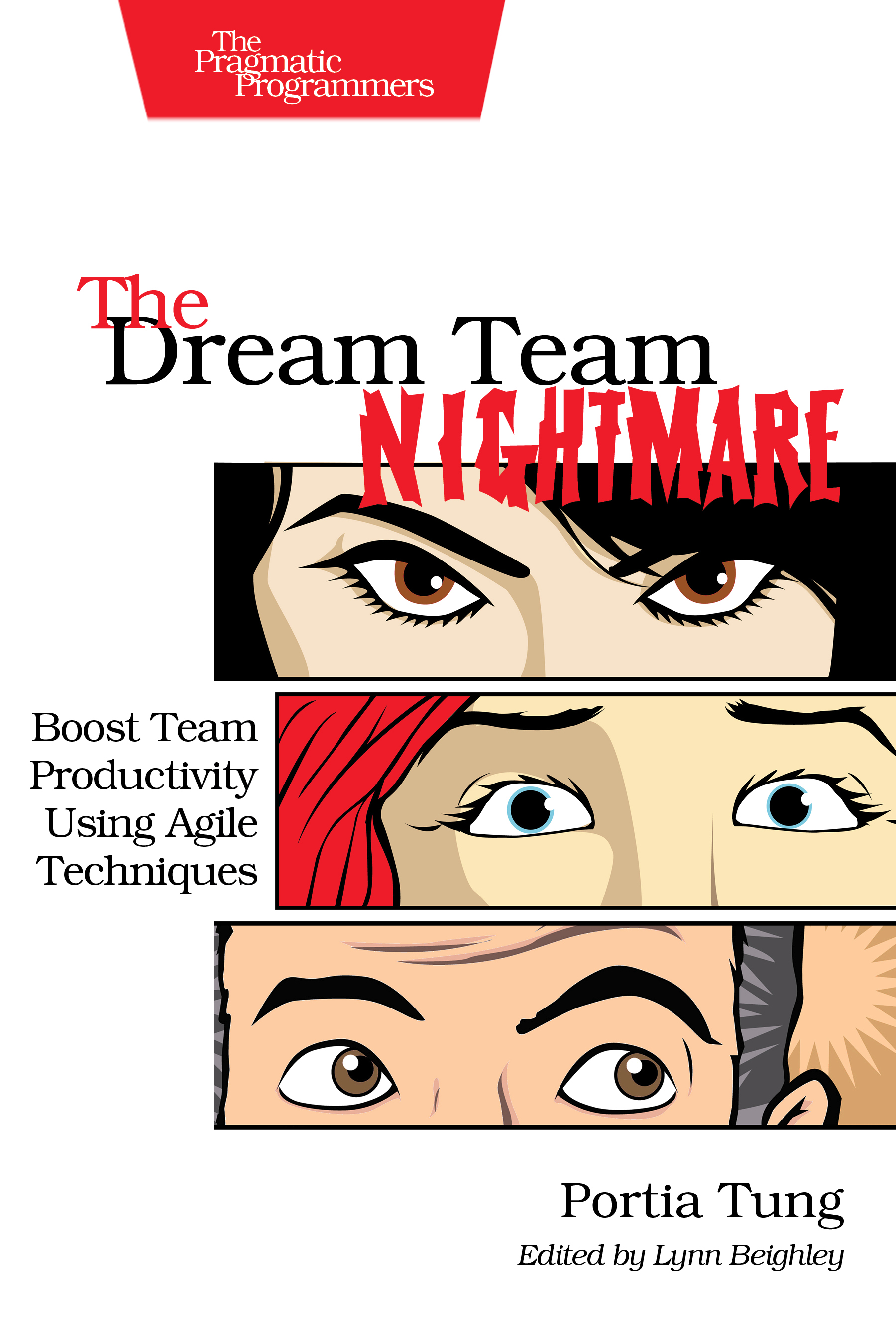The Dream Team Nightmare
Boost Team Productivity Using Agile Techniques
by: Portia Tung
| Published | 2013-11-15 |
|---|---|
| Internal code | ptdream |
| Print status | In Print |
| Pages | 304 |
| User level | Beginner |
| Keywords | agile, software development, methods, methodology, agile adoption, how to, learn, insight, fix, XP, Scrum, extreme programming, pair programming |
| Related titles |
|
| ISBN | 9781937785710 |
| Other ISBN |
Channel epub: 9781680505047 Channel PDF: 9781680505054 Kindle: 9781937785970 Safari: 9781941222393 Kindle: 9781937785970 |
| BISACs | BUS101000 BUSINESS & ECONOMICS / Project ManagementCOM051430 COMPUTERS / Software Development & Engineering / Project ManagementCOM051430 COMPUTERS / Software Development & Engineering / Project Management |
Highlight
This first-ever interactive Agile Adventure is the gripping tale of an experienced team struggling with agile adoption. In this unique mashup of a business novel written in the gamebook format, you’ll overcome common yet daunting challenges that come from using agile methods. As Jim, the agile coach, you’ll learn to apply a range of thinking tools and techniques to real-life problems faced by teams and organizations. Find out what really works and what fails miserably from the consequences of your choices. And, unlike in the real world, if at first you don’t succeed, you can make different choices until you get things right.
Description
Management is ready to disband your new agile team and outsource your project. Can you save The Dream Team?
The Dream Team started their journey 18 months ago. Since then, life has become a nightmare. Progress has ground to a halt. Morale is low. Quality has become taboo. You have five days to figure out how to get the team back on track. There will be conflict and maybe tears. One thing is for sure: there will be plenty of tough decisions to make.
Inspired by a classic gamebook series, this fun and interactive story has eight different endings designed to enrich and put your agile development knowledge and experience to the test. Packed with familiar scenarios an agile team faces every day, The Dream Team Nightmare offers you the chance to see what would happen if you could do things differently so you can change the way you do things for real with confidence.
Combining practical team-building exercises with effective facilitation and Systems Thinking, by the end of the book you’ll be ready to rescue projects in trouble, and get new projects off to a better start.
<b>Q & A with author Portia Tung</b>
How did you come up with the idea of turning the book into a game?
The most effective books are engaging and fun to read. Likewise, for my book to exist, it needed to be engaging and fun to write! The Dream Team Nightmare lets you get caught up in the action to make the learning more memorable. Gamebooks, such as the Choose-Your-Own-Adventure series I read when I was a child, helped me develop a lifelong passion for reading. I hope The Dream Team Nightmare will encourage readers to pursue lifelong learning!
What’s the key takeaway for readers?
Gandhi said, “Be the change that you wish to see in the world.” Agile may seem simple, but it isn’t easy. To be truly agile, I’ve discovered that you need all the practice you can get. This means striving to embrace Agile values and principles whenever you can.
What’s the best way to get the most out of the book?
Start at the beginning and pick a path to follow. You can take a break after each of the 5 days or rest at your journey’s end. Of course you should try to reach the happy ending, but there’s also a lot to be learned from exploring at least some of the unhappy endings. After all, making mistakes is one of the ways we learn.
How many tools and exercises are featured in the book?
There are 16 tools and exercises you can try. There’s a handy index in the appendix so that you can easily refer back and experiment with them in real life.
What can I realistically expect to be able to do after I read the book?
As little or as much as you dare! I recommend taking baby steps. Pick one tool or exercise and give it a go. Then depending on how that turns out, you can decide on the next one to try.
